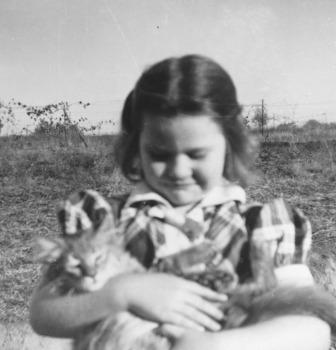Rescuer or hoarder?

A FEW DAYS AGO, a friend posted on Facebook a collage of six of her cats, and someone commented, “You are nothing but a HOARDER!!!”
Well, the cats shown were not all still living. She has had as many as six at a time, but takes care of them as her children. Some she raised from two days old. She has health insurance for every cat, and some live to very old. Her 18-year-old matriarch does not look a day over 10. So that comment got me thinking about the distinction between a hoarder and a rescuer.
Google “animal hoarder,” and the rough definition is someone who accumulates a large number of animals; fails to act on the deteriorating condition of the animals (including disease, starvation, and even death); fails to provide minimal standards of nutrition, sanitation, and veterinary care; fails to act on the deteriorating environment (severely overcrowded and unsanitary conditions) or the negative impact on their own health and well-being.
Most experts have concluded that hoarding—not just of animals— results from some kind of trauma and/ or personality disorder in the obsessive-compulsive spectrum. It’s a complex and little-understood problem that affects hundreds of thousands of people. Animal hoarders believe they are rescuing and caring for animals, when in fact they are mistreating them.
Most hoarded animals are feral or abandoned pets. Someone abandons a 6-month-old pregnant cat, and a hoarder’s natural inclination is to take it in. Then nothing more is done. The cat has kittens, some of which survive and have more kittens.
In a rescue home, the same cat is taken in, and seen by a vet. If the owner is not found (which is usually the case), the cat is put into the rescuer’s cattery or in the care of a foster home. Many vets have contact with established shelters which have lists of fosters.
A foster or rescue home is equipped for all contingencies. There is a room where cats can be quarantined, and adequate room and provision outdoors for spayed and neutered ferals. The pregnant cat would be put in an enclosure to have her kittens. Once the kittens were weaned and taught the critical cat lessons, the mother would be spayed and a decision made as to her future. Would she make a good house cat? If all efforts to socialize her are thwarted, she is placed in a colony or cat community, often in the rescuer’s yard.
There are many different scenarios possible with a cat rescuer, but with a hoarder there is most often only one outcome. The cat has a much shorter life than necessary, and is usually ignored after the initial “rescue.” The house is most likely not habitable, and the animals are often euthanized once the hoarding is discovered.
There is no clear-cut profile of a hoarder. He or she can be rich or poor, employed or not, old or young. But something is seriously lacking in their lives, which they try to fill with animals that are only trying to survive themselves. In rare cases, an animal can help the person, but that is rare. Hoarders avoid social contact so their secret will not be revealed.
The difference between hoarders and rescuers is that rescuers know their limitations. They understand that if they go beyond those limits, not only will they suffer but the animals will as well. That is why rescuers have networks and are constantly involved in the community, from their neighborhood to international groups advocating for abandoned animals.
I have come to the conclusion that it is not the number of animals that makes a hoarder, but how they are cared for and their importance in the family dynamic. A lone cat can be terribly abused, while 15 or 20 can be well cared for and loved under good management. The responsibility is the rescuer’s to make sure the animals are not a burden, but a labor of love.
Kat Brown of Albuquerque is a lifelong animal-lover, especially of cats. She wears many hats, but animal-lover is perhaps the one that has given her the most pleasure. Share your cat stories or comments at katskorner88@gmail.com.
